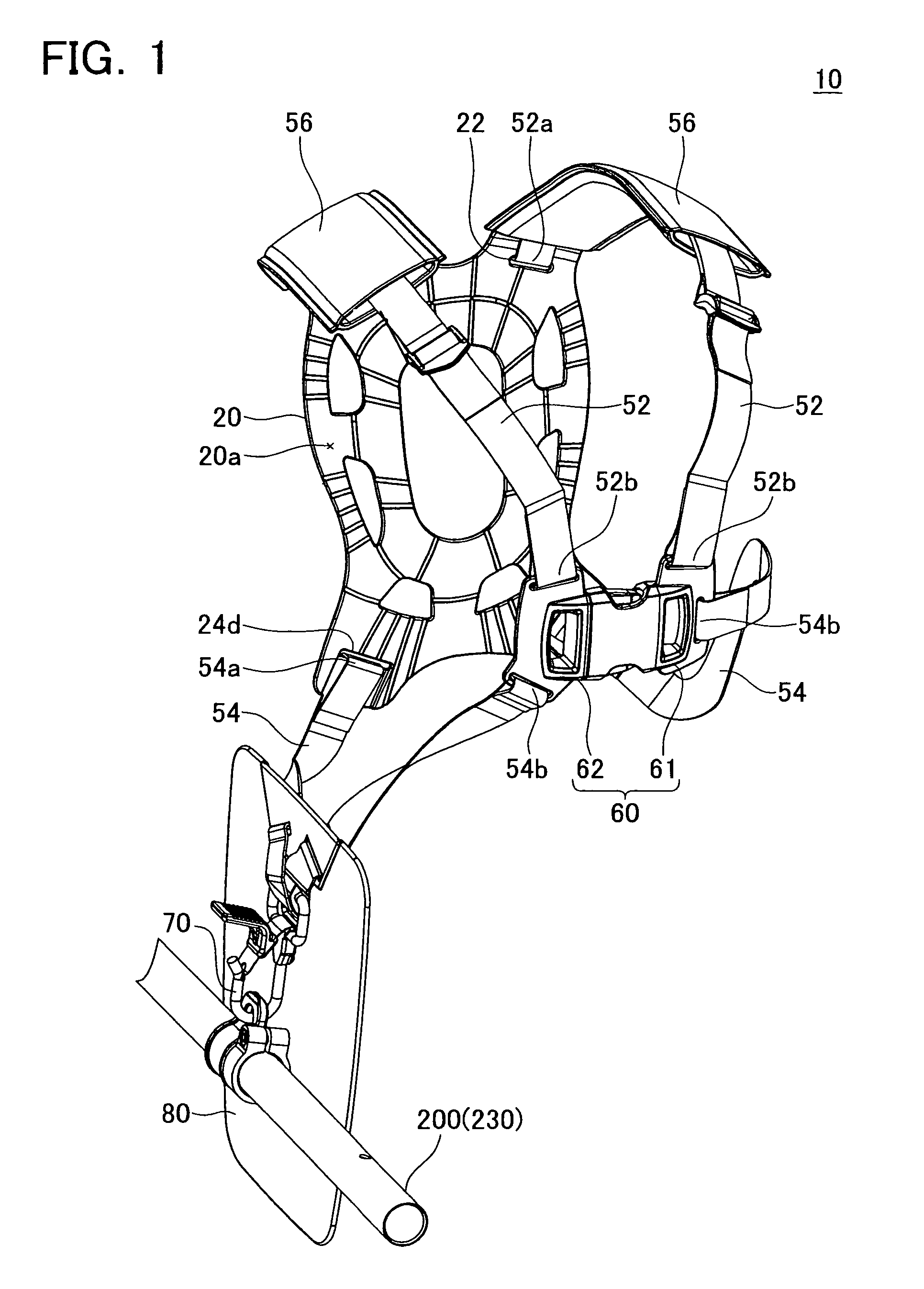Harness for a handheld power equipment
a power equipment and harness technology, applied in the field of harnesses, can solve the problems of not fitting the user's back, affecting the use of the harness,
- Summary
- Abstract
- Description
- Claims
- Application Information
AI Technical Summary
Benefits of technology
Problems solved by technology
Method used
Image
Examples
embodiment 1
[0061]A harness 10 of Embodiment 1 will be described with reference to the drawings. FIG. 1 and FIG. 2 are perspective views showing the entire harness 10. The harness 10 is a mounting tool worn by the user in order to support a handheld power equipment such as a brush cutter 200 (see FIG. 15) or a blower.
[0062]As shown in FIG. 1 and FIG. 2, the harness 10 comprises a backplate 20. The backplate 20 is arranged on the back of the user (not shown in the drawings) when the user wears the harness 10. At this point, an inner surface 20a of the backplate 20 shown in FIG. 1 faces the back of the user, and an outer surface 20b of the backplate 20 shown in FIG. 2 is exposed rearward on the back of the user.
[0063]A pair of shoulder plates 40 is formed on the backplate 20. The pair of shoulder plates 40 extends from the upper portion of the backplate 20. The shoulder plates 40 are respectively arranged on both shoulders of the user when the user wears the harness 10. The shoulder plates 40 are...
embodiment 2
[0096]A harness 110 of Embodiment 2 will be described with reference to the drawings. FIG. 14 is a perspective view showing the entire harness 110. The harness 110 is a mounting tool worn by the user, and serves to hold the brush cutter 200 shown in FIG. 15. Note that FIG. 2 shows an example of the brush cutter 200, and usage of the harness 110 is not limited to the brush cutter 200 shown in FIG. 15. Furthermore, the harness 110 is not limited to the brush cutter 200, and for example can also be used with other types of handheld power equipment such as a blower.
[0097]Compared to the harness 10 of Embodiment 1, the shape of a protector plate 180 is changed on the harness 110 of Embodiment 2. In contrast, with regard to the other construction of the backplate 20 etc., the harness 110 is substantially the same as the harness 10 of Embodiment 1. Thus, the shape, characteristics, and function of the protector plate 180 will be described in detail, but with regard to the other constructio...
PUM
 Login to View More
Login to View More Abstract
Description
Claims
Application Information
 Login to View More
Login to View More - R&D
- Intellectual Property
- Life Sciences
- Materials
- Tech Scout
- Unparalleled Data Quality
- Higher Quality Content
- 60% Fewer Hallucinations
Browse by: Latest US Patents, China's latest patents, Technical Efficacy Thesaurus, Application Domain, Technology Topic, Popular Technical Reports.
© 2025 PatSnap. All rights reserved.Legal|Privacy policy|Modern Slavery Act Transparency Statement|Sitemap|About US| Contact US: help@patsnap.com



